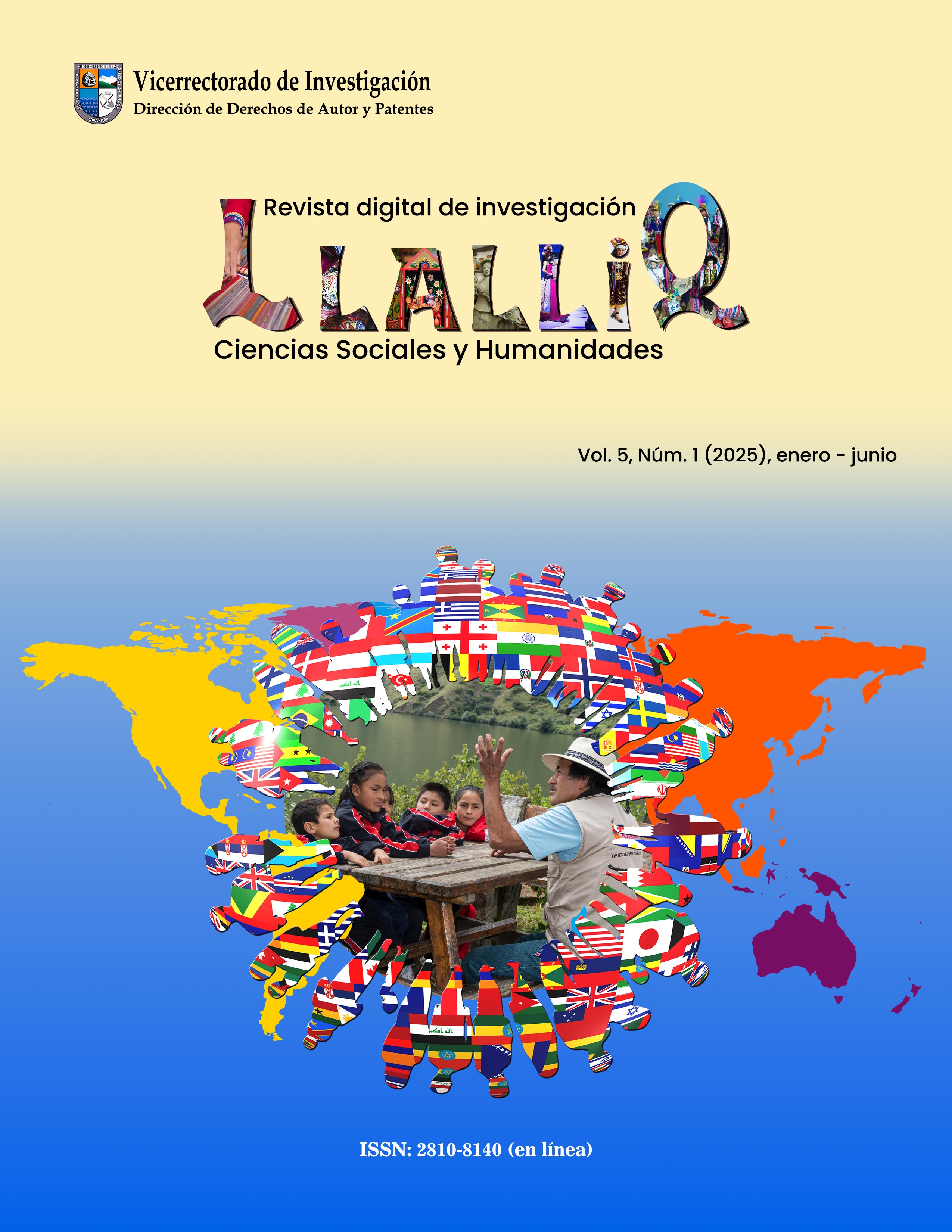Victims in the shadows: male gender in the face of domestic violence in Huaraz, Peru
Main Article Content
Abstract
Intrafamilial violence has historically been seen as a problem in which the woman is always the victim and the man the aggressor, based on gender stereotypes linked to machismo. It is assumed that, being strong and dominant, the male subordinates the female to his yoke. This is nothing more than a stereotyped conception. Within this framework, legislators and the government have enacted laws to protect women; however, this has brought with it the problem of the shadow victims, i.e., males. Therefore, the objectives of this study were to analyze the problem of men as victims of violence and to determine whether they have adequate access to justice and, on that basis, to propose possible solutions. For this purpose, descriptive research with a qualitative approach was carried out based on the analysis of judicial files, specialized literature and an interview with close questions of lawyers. The results show that the state agencies in charge of imparting justice have internalized gender stereotypes that exclude the possibility of recognizing men as victims of domestic violence. This situation leads to men not reporting for fear that their complaints will not be accepted, that they will be humiliated or mocked, and that there is a lack of effective protection for the male gender. In addition, violence against them is justified and there is fear of losing custody of their children in case of separation.
Downloads
Article Details

This work is licensed under a Creative Commons Attribution 4.0 International License.
References
Aguilar Ramos, C. (2024). Estereotipos de género a la luz de la jurisprudencia de la Corte Interamericana de Derechos Humanos: un estudio de los casos contenciosos contra México. Revista Electrónica de Derecho Internacional Contemporáneo, 7(7), 065. https://doi.org/10.24215/2618303xe065
Cereceda Barrios N., Cofré Farias A., Joo Amunátegui M., & Lorca Romero, C. (2020). Estereotipos de género en el proceso judicial: Análisis crítico y de derecho comparado latinoamericano. In Latin American Legal Studies, 6. https://doi.org/10.15691/0719-9112Vol6a6
Cevallos Espinoza A., & Arteaga Alcivar, Y., (2024). Construcción de la identidad del niño y la influencia de los estereotipos de género. Revista Académica y Científica VICTEC, 5, 2024. http://portal.amelica.org/ameli/journal/572/5724879004/
Cristobal Quispe, O., & Palacios Pérez, P. J. (2020). Violencia de género desde la perspectiva masculina. Socialium, 4(2), 377–398. https://doi.org/10.26490/uncp.sl.2020.4.2.680
Docal Millán, M. C., Akl Moanack, P. M., Pérez García, L. Y., & Sánchez Betancourt, L. K. (2022). Violencia intrafamiliar. Un riesgo para el desarrollo de la primera infancia. Revista Colombiana de Ciencias Sociales, 13(1), 77–101. https://doi.org/10.21501/22161201.3628
Flores, R. V. (2021). Imparcialidad, estereotipos de género y corrupción judicial. Derecho PUCP, 86, 363–394. https://doi.org/10.18800/DERECHOPUCP.202101.011
Galiano Maritan G., Morffi Collado C., & Escobar Vargas V., (2022). The violence intrafamilial in the Ecuador as result of the derived sanitary emergency of the COVID-19, Uniandes Episteme 9(3), 427-443. https://www.revista.uniandes.edu.ec/ojs/index.php/EPISTEME/article/view/2682
Gonzales Ruiz, E. Y., Valderrama Varas, G. J., & Salirrosas Cabada, R. I. (2023). Hombres víctimas de violencia de pareja: una revisión sistemática. PsiqueMag, 12(1), 31–44. https://doi.org/10.18050/psiquemag.v12i1.2342
Irigoien Domínguez, A. (2021). Estereotipos de género e interseccionalidad: Una referencia a la normativa y jurisprudencia de la comunidad autónoma del país vasco. Revista Vasca de Administración Pública / Herri-Arduralaritzarako Euskal Aldizkaria, 119, 101–126. https://doi.org/10.47623/ivap-rvap.119.2021.03
Julca, F., & Nivin, L. (2019). Introducción metódica a la investigación cualitativa. Bases teóricas y prácticas para iniciarse en la investigación cualitativa. Facultad de Derecho y Ciencias Políticas, Universidad Nacional Santiago Antúnez de Mayolo.
López-Julca, R., & Julca-Guerrero, F. (2023). Violencia de género en la era digital y su tratamiento jurídico en el Perú. AEQUITAS. Revista Virtual de La Corte Superior de Justicia de Piura, 2(11), 236–249. https://n9.cl/9a0yp
Nivin-Vargas, L., Segura, M. del C., López-Julca, R., & Julca-Guerrero, F. (2025). Violencia de género digital y medidas de protección en el Perú. (Forthcoming).
Paredes Pineda, A. L. (2022). Violencia intrafamiliar. Revista Huella de La Palabra, 16(16), 30–41. https://doi.org/10.37646/huella.v16i16.565
Quintana Peña, A., Grajeda Montalvo, A., Malaver Soto, C., Medina Curi, N., Montgomery Urday, W., Ruiz Sánchez, G., & Ojeda Mercado, G. (2020). Estereotipos de género y violencia encubierta de pareja en hombres y mujeres de 18 a 24 años. Revista de Investigación En Psicología, 22(2), 181–196. https://doi.org/10.15381/rinvp.v22i2.17420
Salinas Garza J., Rodríguez Lozano L. &. García Monroy M. (2023). Perspectiva de género. Revista Jurídica Mario Alario D’Filippo, 15(30), 326–339. https://doi.org/10.32997/10.32997/2256
Sánchez-Soto, M. de la L., Lechuga-Quiñones, A. M., Flores-Saucedo, M. P., & Estrada-Martínez, S. (2022). Varones violentados por su pareja: una primera aproximación a la experiencia de estudiantes duranguenses mexicanos. Avances en Psicología Latinoamericana, 40(1), 1–16.
https://doi.org/10.12804/revistas.urosario.edu.co/apl/a.6851
Suarez, B., & Pino, R. (2023). Formas históricas de masculinidad en estudiantes de la carrera de gestión social y desarrollo de la UPSE, 2023. Universidad y Sociedad, 15(5), 327–335. https://rus.ucf.edu.cu/index.php/rus/article/view/4081
Triviño L. (2022). Violencia intrafamiliar: Hombre como víctima invisible [Tesis de grado, Universidad Católica de Colombia].
https://repository.ucatolica.edu.co/entities/publication/0d2fece4-f007-4257-b65c-e133afa114b8
Trujano, P., & Martínez, A. E. (2009). Varones víctimas de violencia doméstica: un estudio exploratorio acerca de su percepción y aceptación. Revista DIVERSITAS - Perspectivas en Psicología, 339-354. http://www.redalyc.org/articulo.oa?id=67915140010
